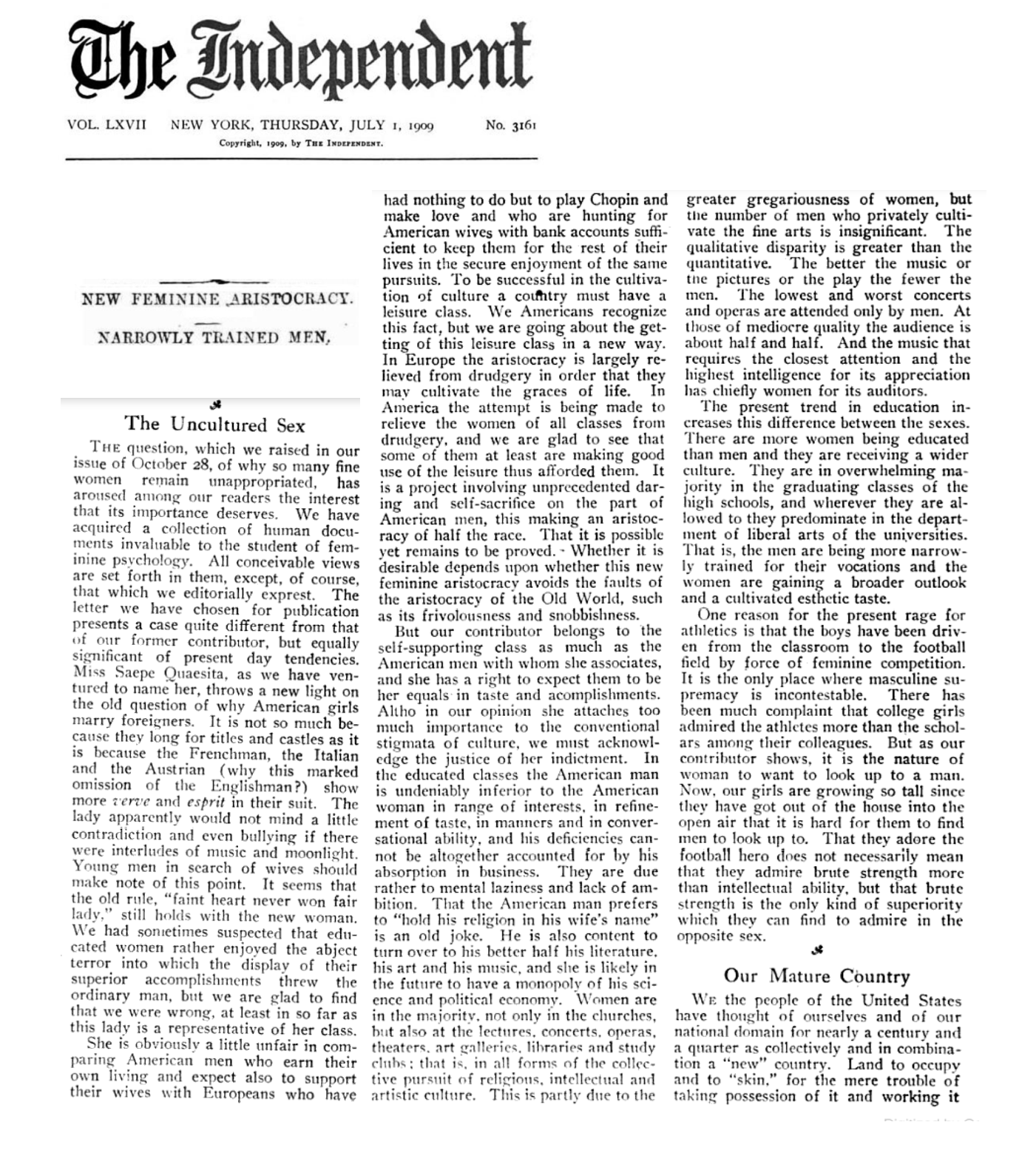The following is from a newspaper article dated 1909:
* * *
NEW FEMININE ARISTOCRACY
NARROWLY TRAINED MEN
A question of deep human interest has been raised by the “Independent” when it asked: “Why do so many fine women remain unappropriated?”
“To be successful in the cultivation of culture a country must have a leisure class,” says the editor. “We Americans recognise this fact, but we are going about the getting of this leisure class in a new way.
“In Europe the aristocracy is largely relieved from drudgery in order that they may cultivate the graces of life. In America the attempt is being made to relieve the women of all classes from drudgery, and we are glad to see that some of them at least are making good use of the leisure thus afforded them. It is a project involving unprecedented daring and self-sacrifice on the part of American men, this making an aristocracy of half the race. That it is possible yet remains to be proved. Whether it is desirable depends upon whether this new feminine aristocracy avoids the faults of the aristocracy of the Old World, such as frivolousness and snobbishness.”
Of one contributor the editor says, “She belongs to the self-supporting class as much as the American men with whom she associates, and she has a right to expect them to be her equals in taste and accomplishments. Although in our opinion she attaches too much importance to the conventional stigmata of culture, we must acknowledge the justice of her indictment. In the educated classes the American man is undeniably inferior to the American woman a range of interests, in refinement of taste, in manners, and in conversational ability, and his deficiencies cannot be altogether accounted for by his absorption in business. They are due rather to mental laziness and lack of ambition.
“That the American man prefers to ‘hold his religion in his wife’s name’ is an old joke. He is also content to turn over to his better half his literature, his art, and his music, and she is likely in the future to have a monopoly of his science and political economy. Women are in the majority, not only in the churches but also in the lectures, concerts, operas, theatres, art galleries, libraries and study clubs : that is, in all forms of the collective pursuit of religious, intellectual, and artistic culture. This is partly due to the greater gregariousness of women, but the number of men who privately cultivate the fine arts is insignificant. the qualitative disparity is greater than the quantitative. The better the music or the pictures or the play, the fewer the men. The lowest and worst concerts and operas are attended only by men. As those of mediocre quality the audience is about half and half. And the music that requires the closest attention and the highest intelligence for its appreciation has chiefly women for its auditors.
“The present trend in education increases this difference between the sexes. There are more women being educated than men, and they are receiving a wider culture. They are in overwhelming majority in the graduating classes of the high schools, and wherever they are allowed to they predominate in the department of the liberal arts of the universities. That is, the men are being more narrowly trained for their vocations and the women are gaining a broader outlook and a cultivated aesthetic taste. ”
Original source: The Independent, Volume 67, 1909
Secondary source: Article, Kalgoorlie Miner, 5 January 1910
